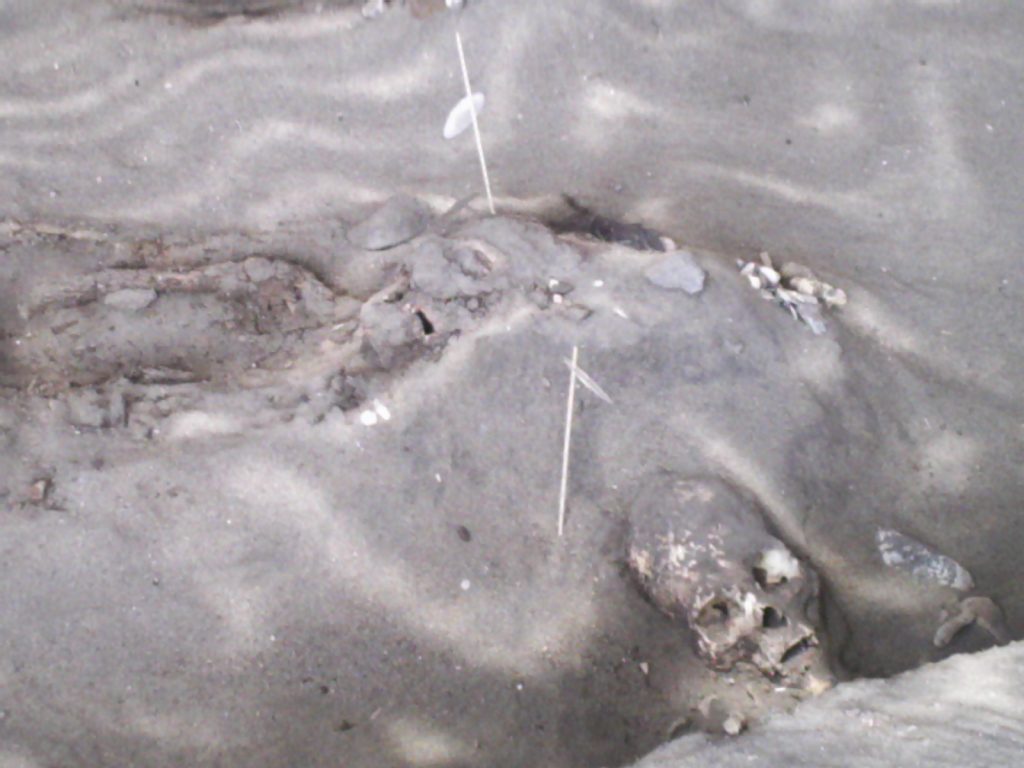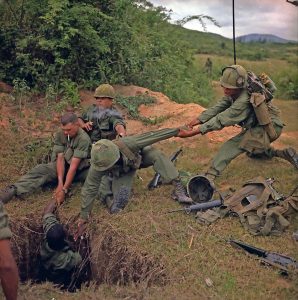When people hear the word mummy, most will think of the pharaohs found in tombs in Egypt. While they are the most well known, what many people may not realize is that the process of mummification has existed long before the Egyptians began doing it. Mummies, which scholars believe to be the oldest, even before recorded history, have been located in Chile, and are said to have belonged to an ancient people known as the Chinchorro.
What exactly is a mummy? A mummy is defined as “dead human or animal body [from ancient times] preserved by embalming or by unusual natural conditions.”1 Many of the areas in which mummies have been recovered all share one similar trait; each is known for extremely hot and dry weather. These climates cause the body to dry up and slow down the decomposition process.2

The oldest mummies belong to a people now referred to as the Chinchorro, who are believed to have lived between 8,000 BCE and 500 BCE. Evidence suggests that their practice of mummification predates Egyptian mummies by as many as two thousand years.3 The Chinchorro lived in the Atacama Desert, which is located in Southern Peru in Chile. They are believed to have been fisherman, living along the coast.4
Mummification was a complicated process. All organs, including the heart, eyes, and lungs were removed, followed by the skin. The body was then dried of fluids and stuffed with sticks, plant fibers, and straw. The body was disassembled by removing the bones and organs, and dried of all liquids. The body was then covered with black clay used to mold a new face, as the bones were put back into the body, along with sticks, clay, and plant fibers. A clay mask was made and placed over the skull, and the rest of the body was coated in Manganese paint, to give it a red color.5

Nearly two hundred Chinchorro mummies have been recovered from the Camarones River region. The earliest of these has been dated at 5050 BCE.6 The oldest mummies were children and small infants, suggesting that mummification was originally a practice carried out by grieving parents to remember their children. Upon further examination of the mummies, it is believed that high arsenic levels in the waters were the cause for high infant mortality rates among the Chinchorro.7
These mummies of Chinchorro today face great peril. Climate changes have caused the mummies to decay, along with many other treasures and artifacts. Microorganisms have grown from moisture in the air that are capable of decomposing skin. Researchers’ new goals are to find ways to preserve the ancient bodies of the Chinchorro people before it is too late.
- Columbia Electronic Encyclopedia, 6th Edition, April 2016, s.v. “Mummy.” ↵
- Salem Press Encyclopedia Of Science, January 2015, s.v. “Mummification,” by James L. Robinson. ↵
- Salem Press Encyclopedia Of Science, January 2015, s.v. “Mummification,” by James L. Robinson. ↵
- Salem Press Encyclopedia, January 2015, s.v. “Chinchorro Mummies,” by Michael W. Simpson. ↵
- Salem Press Encyclopedia Of Science, January 2015, s.v. “Mummification,” by James L. Robinson; Barbara Fraser, “Mysterious Mummies: An Anthropologist and a Geologist Team up to Solve the Puzzle of Chile’s Mummies,” Science World/Current Science Vol. 26 Issue 4 (2012): 8-11. ↵
- Salem Press Encyclopedia, January 2015, s.v. “Chinchorro Mummies,” by Michael W. Simpson. ↵
- Heather Pringle, “Arsenic and Old Mummies: Poison May Have Spurred First Mummies,” Science 324, no. 5931 (2009): 1130. ↵



63 comments
Irene Astran
It is sad to think our way of life is ruining the hard work that people must have put into mummifying their loved ones. I do not condone people digging up the bodies of ancient Egyptian leaders either. They were laid to rest and now people are disturbing that ritual because they want to display their bodies in museums. Thank you for providing that information. It is important for people to understanding that our way of life is affecting people on a wider scale than they might understand.
Natalia Zuniga
It was great to learn that unlike what most people and I believe the Egyptian people did not have the first mummies. Finding out that it had been happing for a while in South America long before in Africa made me even more curious about what else had been long before the Americas were discovered. I would have been great to know what differences of mummification technic they had
Jennifer Pogue
Wow, very informative. This article makes history fun to learn! You were right, I thought the concept of a mummy originated in Egypt. The process of mummification is grusume. I can’t imagine what kind of person would be able to disassemble the human body in that way, but I suppose it was neseccary. Overall you did a great job of explaining what a mummy is and why they were created.
Mario De Leon
This article was very interesting. I found it interesting that people from different parts of the world practiced mummification. I have never heard of the Chinchorro people and I only associated mummies with the Egyptian people. The article does of good job of explaining how the Chinchorro people practiced mummification. I found it interesting that a lot of the mummies found were of children and how that gave us evidence that the Chichorro suffered a high infant mortality rate.
Anayeli Prieto
Mummies are very interesting to learn about and the process that they must go through after their death to maintain their skin is incredible. it makes you wonder many things like what materials they used to remove all of the organs and how long this process took. If the mummies that were found first were children, could there be more of a reason for their bodies becoming mummies such as an illness or a natural disaster?
Ana Gonzalez
This was a very informative article! I also thought that mummies originated from Egypt but it was surprising that the oldest mummies are actually from Peru. I also always assumed that mummification was a process done to the bodies of the elite but from this article I learned that the Chinchorro civilization did this to remember children. You did a great job explaining the way that a mummy is created because I had no idea before reading this. Well done!
Sam Vandenbrink
Theres some things you don’t always want to know about history and this article would be one of those topics. Very interesting and in-depth on how mummification is done, to the extent that mummies have there skin removed as well. As the mummies decay I feel as if we are loosing a piece of history. The writer makes you think about how far back history takes us and even though these mummies have been around so long we are loosing a part of our ancestors by not recovering these remains.
Overall a great informative article! Helping add to my knowledge on mummification and the Chinchorro Past.
Mariana Govea
What a great article! I loved the read it was so interesting! I am amazed! I did not know that mummies originated in Chile, that is crazy! I always thought that mummies were the ones that came from Egypt, and that they were really only kings or pharaohs from back then! But after reading this article it really did educate me on what mummies were when they once began, which they mention that it was usually for parents who their children passed away and it was a way to help them remember them and helped them cope with the loss! Which is so crazy and creepy! But its great to know now that the group who started this tradition was the Chinchorro from Peru! As well as i never knew that did practice took place way before the Egyptians did! Great research and very well explained and defined!
Luke Trevino
It is a very well written article! All my life I believed the mummification process to have started in Egypt when in reality it started in Peru. I see the process as an art, the fact that these people took a good of amount of time to preserve their loved ones. Overall, really informative essay I love learning on old traditions in certain cultures!
Aimee Trevino
Such a great article! It is crazy to think with all the attention gone towards mummies in Egypt that this process actually derived from Peru. I really enjoyed all the detail put into this article, and feel it has given me a pretty thorough explanation. I especially enjoyed reading the actual process of mummification, even though it is pretty disgusting. Great writing.